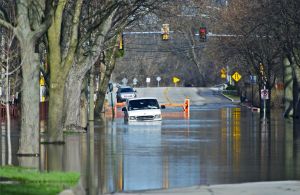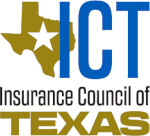Economics and Insurance
Impact on the Texas Economy


The P&C industry in Texas is one of the largest in the country and is a major contributor to the state's economy. In 2022, the P&C industry in Texas generated over $80.5 billion in direct written premiums and over $3.1 billion in premium taxes. The industry also employs over 260,000 people and pays out billions of dollars in claims annually. The P&C industry is a vital part of the financial services sector in Texas, which is the state's second-largest industry, after energy.
The P&C industry's contributions to the Texas economy go beyond providing insurance coverage and creating jobs. Industry also plays a crucial role in helping businesses and individuals manage risks and recover from losses. In the aftermath of natural disasters like hurricanes, tornadoes, and floods, the P&C industry helps homeowners and businesses get back on their feet by paying out claims for property damage and business interruption. This support is critical for communities to recover and for businesses to continue operating after a disaster.
The P&C industry in Texas supports other sectors of the economy, such as construction and real estate. Builders and developers rely on insurance coverage for their projects, and mortgage lenders require homeowners to have insurance coverage to secure their loans. Without insurance, many businesses and individuals would be unable to take on the financial risks associated with owning and operating property.
In addition to providing insurance coverage, the P&C industry also invests heavily in the Texas economy. Insurance companies invest in real estate, infrastructure, and other industries to generate returns and grow their businesses. These investments create jobs and stimulate economic growth in the state.
The P&C industry in Texas also supports the state's small businesses. Small businesses are the backbone of the Texas economy, and the P&C industry provides them with the insurance coverage they need to operate and grow their businesses. Without insurance, small businesses would be vulnerable to financial losses from accidents, lawsuits, and other risks. Insurance coverage enables small businesses to take on risks and innovate, contributing to economic growth and job creation in the state.
In conclusion, the property and casualty insurance industry is a critical part of the Texas economy. It provides insurance coverage, creates jobs, invests in the economy, and supports other sectors of the economy, such as construction, real estate, and small businesses. The industry’s contributions to managing risks and helping communities recover from disasters are particularly important. Overall, the P&C industry's impact on the Texas economy is significant, and it will continue to play a vital role in the state's growth and development in the years to come.
Community Impact
The property and casualty (P&C) insurance industry has a significant impact on charitable and community organizations in Texas. P&C insurers provide coverage for businesses, homes, and other properties, protecting them from potential losses due to natural disasters, accidents, and other unforeseen events. In Texas, where natural disasters such as hurricanes and tornadoes are common, P&C insurers play a vital role in helping communities recover from these events.
The P&C insurance industry in Texas also contributes significantly to charitable organizations and community programs. Many insurers have corporate social responsibility programs that provide financial support, volunteer hours, and other resources to non-profit organizations. For example, some insurers support organizations that provide affordable housing, disaster relief, and education programs.
In addition to financial support, the P&C insurance industry in Texas also promotes community engagement among its employees. Many insurers encourage their employees to volunteer for community service activities, and some offer paid time off for volunteering. This not only benefits the community but also helps to improve employee morale and job satisfaction.
Moreover, the P&C insurance industry in Texas also helps to create jobs and stimulate economic growth, which ultimately benefits charitable and community organizations. Insurance companies provide employment opportunities for thousands of Texans, and they also invest in local businesses and infrastructure.
In conclusion, the property and casualty insurance industry has a significant impact on charitable and community organizations in Texas. Through their insurance products, financial support, employee volunteerism, job creation, and economic growth, P&C insurers play an essential role in supporting and strengthening Texas communities.
Charitable Impact
The P&C insurance industry gives to charities in Texas, and the amount varies depending on the insurer and the specific charitable organization or cause. Many companies have established corporate social responsibility programs that support various charitable and community organizations in Texas. These programs typically include financial donations, volunteer hours, and other types of support.
According to a report by the Insurance Industry Charitable Foundation (IICF), the P&C insurance industry contributed over $32 million to charitable causes in Texas in 2019. The report also found that 87% of P&C insurance companies in Texas have formal charitable giving programs, and 98% of employees participate in some form of charitable giving or volunteer activity.
The IICF report also highlights some of the charitable initiatives supported by the P&C insurance industry in Texas, including disaster relief efforts, education programs, and initiatives that promote diversity, equity, and inclusion.
It's worth noting that the amount given by P&C insurance companies to charities in Texas is just one part of their overall charitable giving, as many of these companies also support national and international charitable causes. Additionally, some P&C insurance companies may choose to give directly to charitable organizations rather than through their corporate social responsibility programs, which may not be reflected in the IICF report.
The industry in Texas is a significant contributor to charitable causes, supporting a wide range of organizations and initiatives that benefit Texas communities.
Economic Pressures on Insurance Rates in Texas


There are several reasons for automobile and homeowners insurance rates increasing in Texas, but here are a few possible factors:
- Severe weather events: Texas is prone to severe weather events like hurricanes, hailstorms, and flooding. These natural disasters can cause significant damage to homes and vehicles, leading to higher insurance claims, and insurers may need to increase premiums to cover these costs.
- Increasing litigation costs: Texas has seen an increase in litigation costs related to automobile accidents and property damage claims. This can drive up insurance rates as insurers may need to pay out more in settlements and legal fees.
- Rising medical costs: Medical costs associated with automobile accidents and other types of injuries have been increasing in recent years. As a result, insurers may need to increase premiums to cover these higher costs.
- Increased construction costs: Building and construction costs have been on the rise in Texas, which can increase the cost of rebuilding or repairing a home after a covered event. This can lead to higher insurance rates as insurers may need to pay out more to cover these costs.
- Inflation: Inflation has had a significant impact on the cost of goods and services, including insurance rates. However, the specific impact of inflation on auto and homeowners insurance rates in Texas may depend on a variety of factors, including the overall economic climate, industry trends, and state regulations.
It is important to note that auto and homeowners insurance rates are influenced by many factors beyond inflation, such as the frequency and severity of claims, the cost of repairs and replacements, and changes in state laws and regulations. These factors can often have a greater impact on insurance rates than inflation alone.
Inflation can affect insurance rates in a few different ways. One way is through the cost of labor and materials used in repairs and replacements. As the cost of these inputs increases due to inflation, insurers may need to raise their rates to cover these increased costs.
Additionally, inflation can also affect the value of the assets being insured, such as homes and cars. If the value of these assets increases due to inflation, insurers may need to adjust their rates to reflect the increased value and potential cost of repairs or replacements.
Overall, the impact of inflation on auto and homeowners insurance rates in Texas is complex and multifaceted and may vary depending on a range of factors. If you have specific questions or concerns about insurance rates in Texas, it may be helpful to speak with a licensed insurance professional or seek out additional resources from the Texas Department of Insurance.
Social Inflation
Social inflation is a term used to describe the tendency of insurance claims and litigation costs to increase over time due to societal factors such as changing attitudes, increased litigation, and larger jury awards.
The impact of social inflation on the property and casualty insurance industry in Texas can be significant. In recent years, Texas has seen a rise in the number of lawsuits filed against companies, particularly in areas such as personal injury, product liability, and commercial auto liability. This has led to an increase in claims and litigation costs for insurers operating in Texas.
Changing attitudes towards compensation and liability have also affected the insurance industry in Texas. For example, juries in Texas have become known for awarding large verdicts in cases involving personal injury and other types of liability. This has led to an increase in the size of settlements and jury awards, which in turn has contributed to higher claims and litigation costs for insurers.
To mitigate the impact of social inflation, insurers in Texas may need to adjust their underwriting practices and re-evaluate their risk appetite. They may also need to work with policymakers and stakeholders to address the underlying societal factors that contribute to social inflation, such as tort reform and changes to the legal system.
In response to the rise in litigation and claims costs in Texas, some insurers have reduced their exposure to certain types of liability coverage or have exited the market altogether. This has led to a more challenging insurance market in Texas, with some policyholders facing higher premiums or reduced coverage options.
Additional Resources
Insurance Council of Texas - 2023/2024 State of the Texas Property & Casualty Insurance Market
2024 State Insurance Trade Association: Triple-I’s State of the P&C Insurance Industry with Dale Porfilio, Chief Insurance Officer, Insurance Information Institute
2024 State Insurance Trade Association: State of the P&C Insurance Market: What’s Working, What’s Not, and What’s Next with Roosevelt Mosely, Managing Principal, Pinnacle Actuarial Resources Inc., and Christopher Schubert, Senior Consulting Actuary, Pinnacle Actuarial Resources Inc.
